Ringling museum explores variations of the human figure in ‘Embodied’ exhibit
Artists have depicted the human form since the days of the early cave painters. They’ve gotten a lot more sophisticated in the millennia that followed. “Embodied” offers proof at The Ringling. Curated by Ola Wlusek, this exhibition offers humanistic selections from the museum’s modern and contemporary art collection. The work is not all figurative. But each piece embodies the human experience.
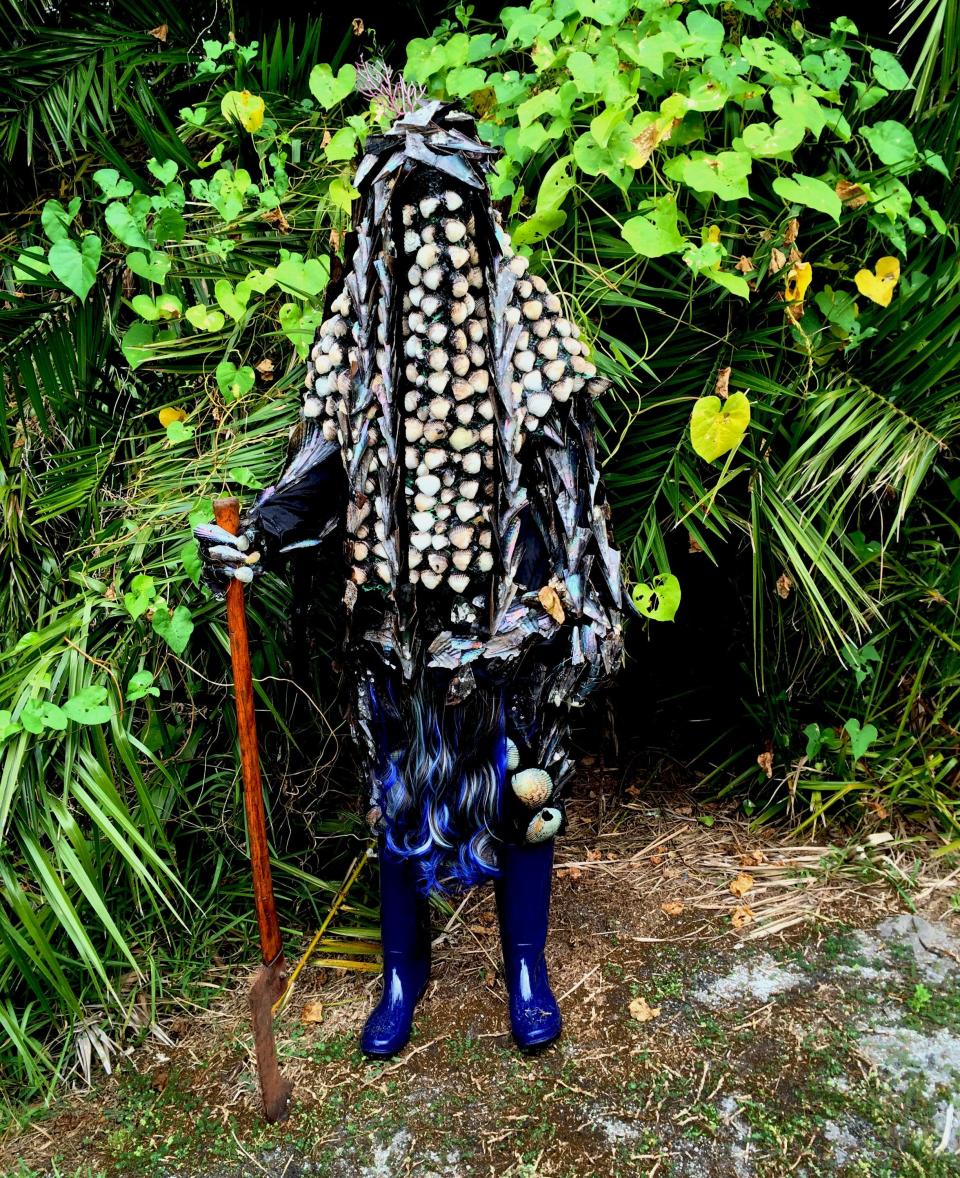
Black and indigenous perspectives
The work of African-American and indigenous creators is strongly represented. Contemporary artists from the last three decades all have their say.
Cauleen Smith's video, "Egungun: Ancestor Can't Find Me" (2017), shows an engungun, a shrouded figure, gliding gracefully through a subtropical ecosystem. (It was filmed during the artist’s residency on Captiva Island.) In Yoruban culture, engunguns are intricately costumed performers who dance at festivals honoring ancestors. Smith’s film flips that narrative. Here, the present isn’t trying to recapture the past; an otherworldly emissary from the past seeks connection with the present.
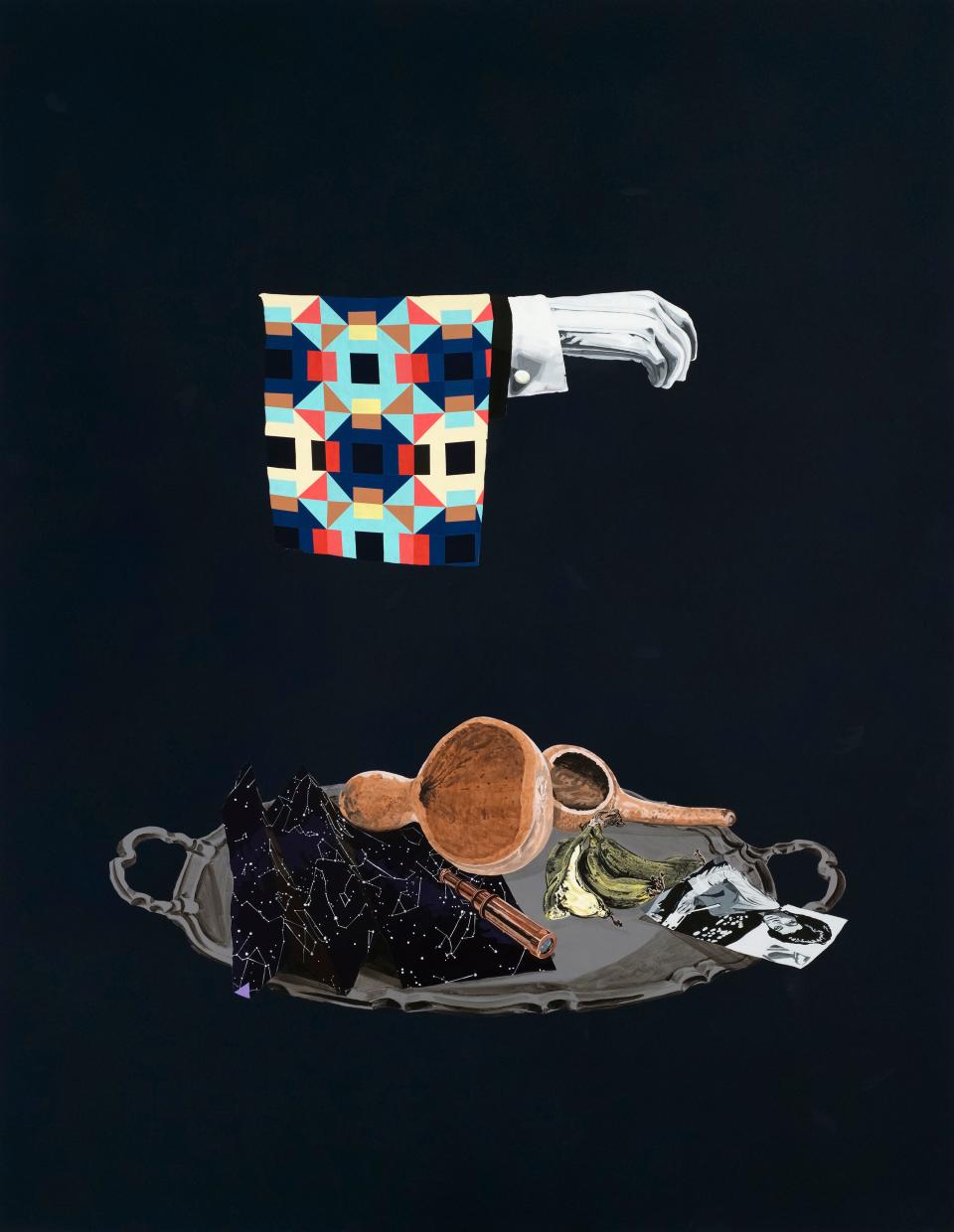
William Villalongo's “Still Life with Quilt and Drinking Gourds” (2021) marks the African-American journey with the techniques of European still-life painting. But his still life is far from still. A silver tray holds icons of the past, present and future. A black-and-white photo of Nichelle Nichols, the actor who played Uhura in the original “Star Trek”; a diagram of the Big Dipper that speaks of runaway slaves navigating to freedom by the light of the North Star; and drinking gourds that literally quenched their thirst. It’s all about the journey. (And it’s not over yet.)
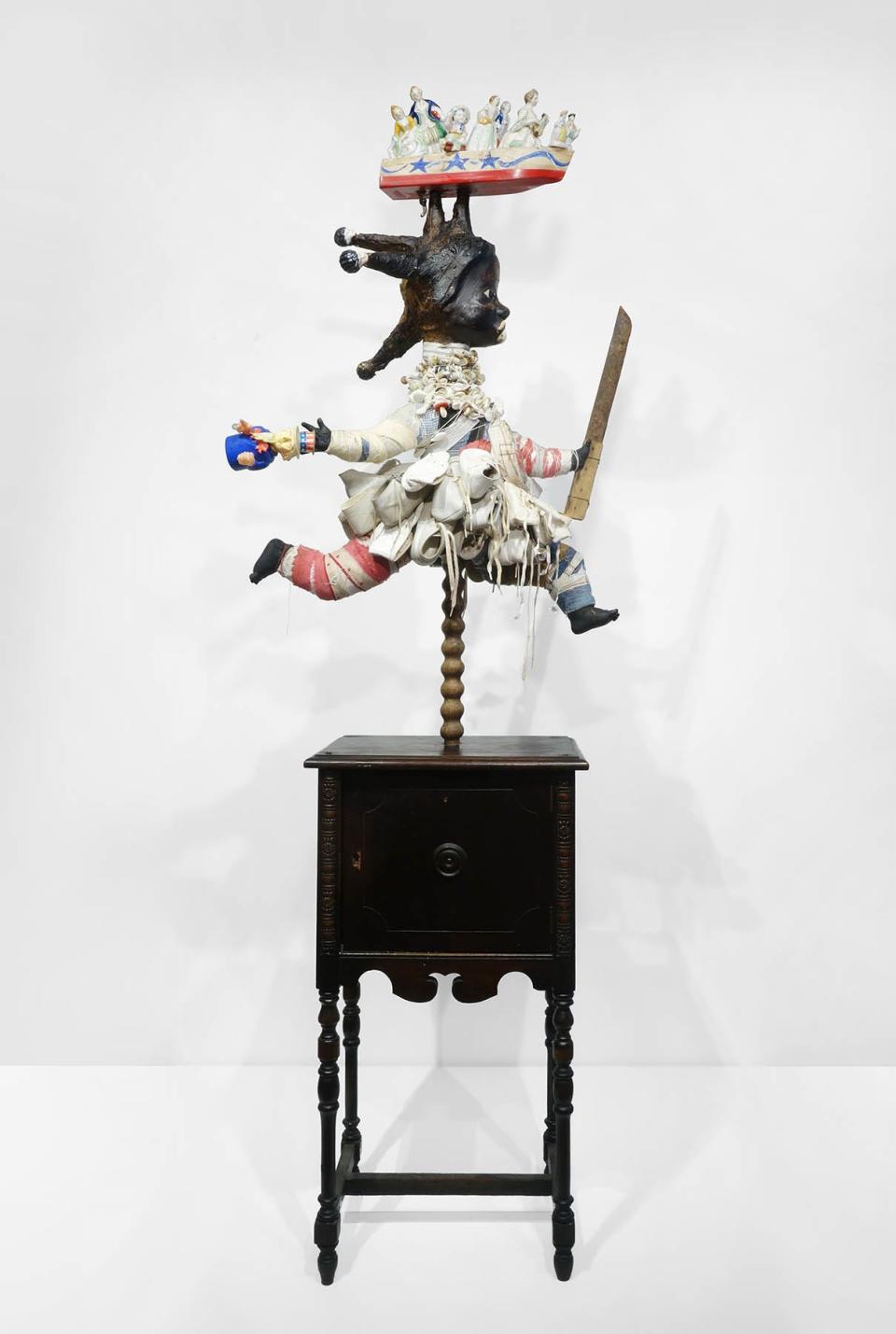
vanessa german’s “Just Do It” (2014) is the gleeful sculpture of a Black girl running for all she’s worth. (Despite the Nike slogan, the kid’s not wearing tennis shoes.) What’s this little girl made of? To quote the artist’s description, she’s an aggregate of “wood, wood glue, plaster gauze, tar, rage, cowrie shells, love, and old plastic doll parts, witness, pain, steel, cloth, twine, rage, old toy boat, ceramic figurines … and a knife to cut things with.” German’s hyperactive child is far from cute.
Artistic conversations
Artists often speak to other artists. Their side of the conversation can be a rebuttal, a parody, an homage, or a footnote. Here, you’ll find all of the above.
Larry Rivers’ “Matisse Opera” (1992) shows Henri Matisse in his studio painting a live model. Not fawning hagiography. This multimedia painting is a playful Pop Art tribute to this artist’s favorite Fauve. Echoing the fractured forms of Matisse’s work, Rivers brings the painter and his subject into the third-dimension with painstakingly sculpted, cast-resin fiber and foam board. The nude model also resembles one of Matisse’s painted women. It’s a subtle dash of artful wit.
Gabriel Kohn’s terra cotta bust “Portrait of Syd Solomon” (1946) honors his abstract expressionist friend – wry smile and moustache included. Solomon returned the compliment with “Portrait of Gabe Kohn” (1959), one of his rare representational paintings.
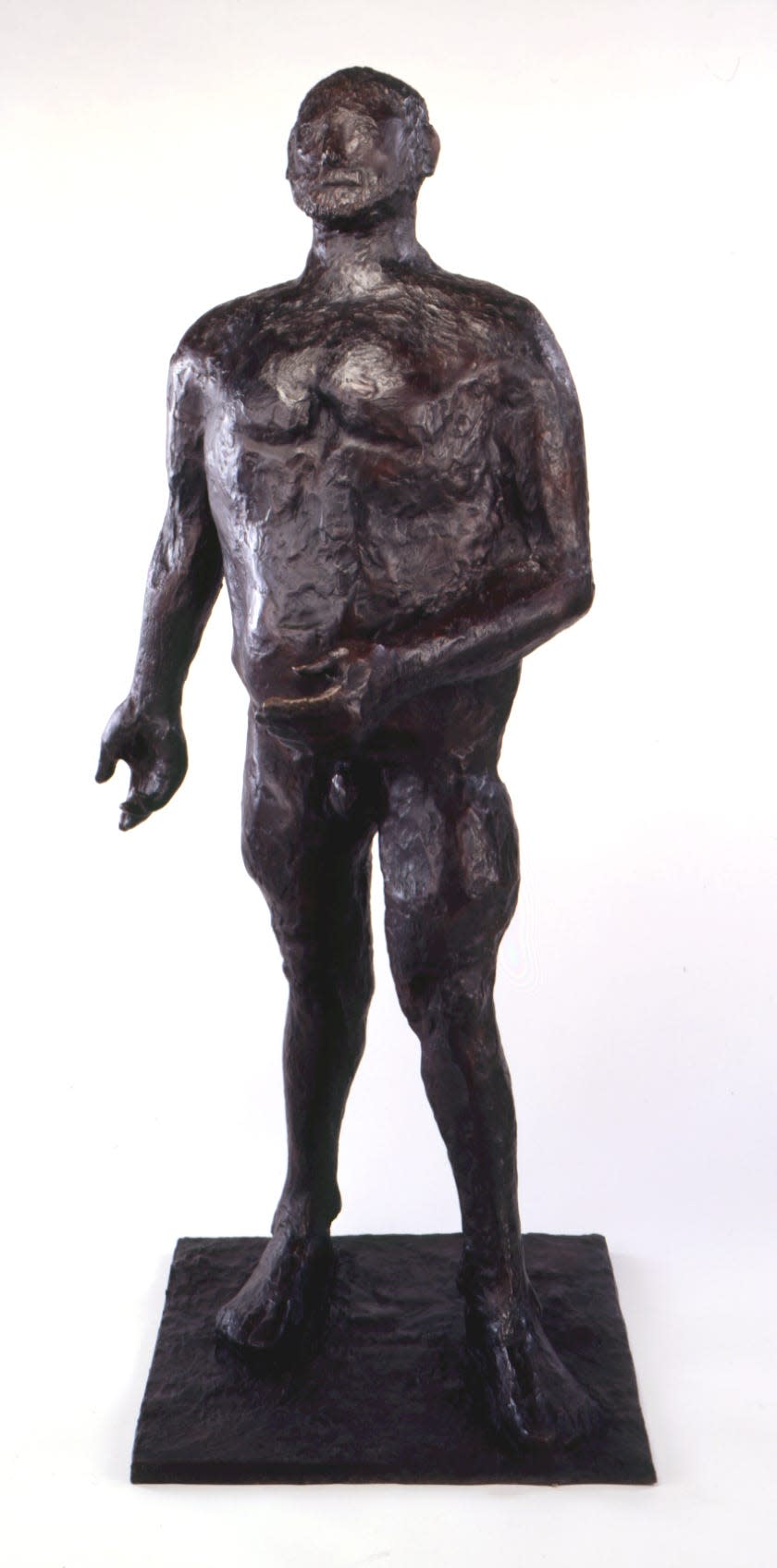
Leonard Baskin’s bronze sculpture “Hephaestus” (1963), depicts the Rodney Dangerfield of ancient mythology. This poor Greek god got no respect. Even his parents Zeus and Hera didn’t like him. The kid was born ugly, so they tossed him off Mount Olympus. How’s that for disrespect? The fall gave him a limp, but it didn’t kill him. Hephaestus grew up to be the working-class god of the forge. The clique of cool Greek deities always thought he was a sooty joke. Earthly poets laughed, too. Baskin disagrees. His sculpture is no pretty boy. But it gives Hephaestus all due respect.
Personal histories
Artists speak of the universal human experience. They also speak of the world behind their eyes. And that can get highly personal.
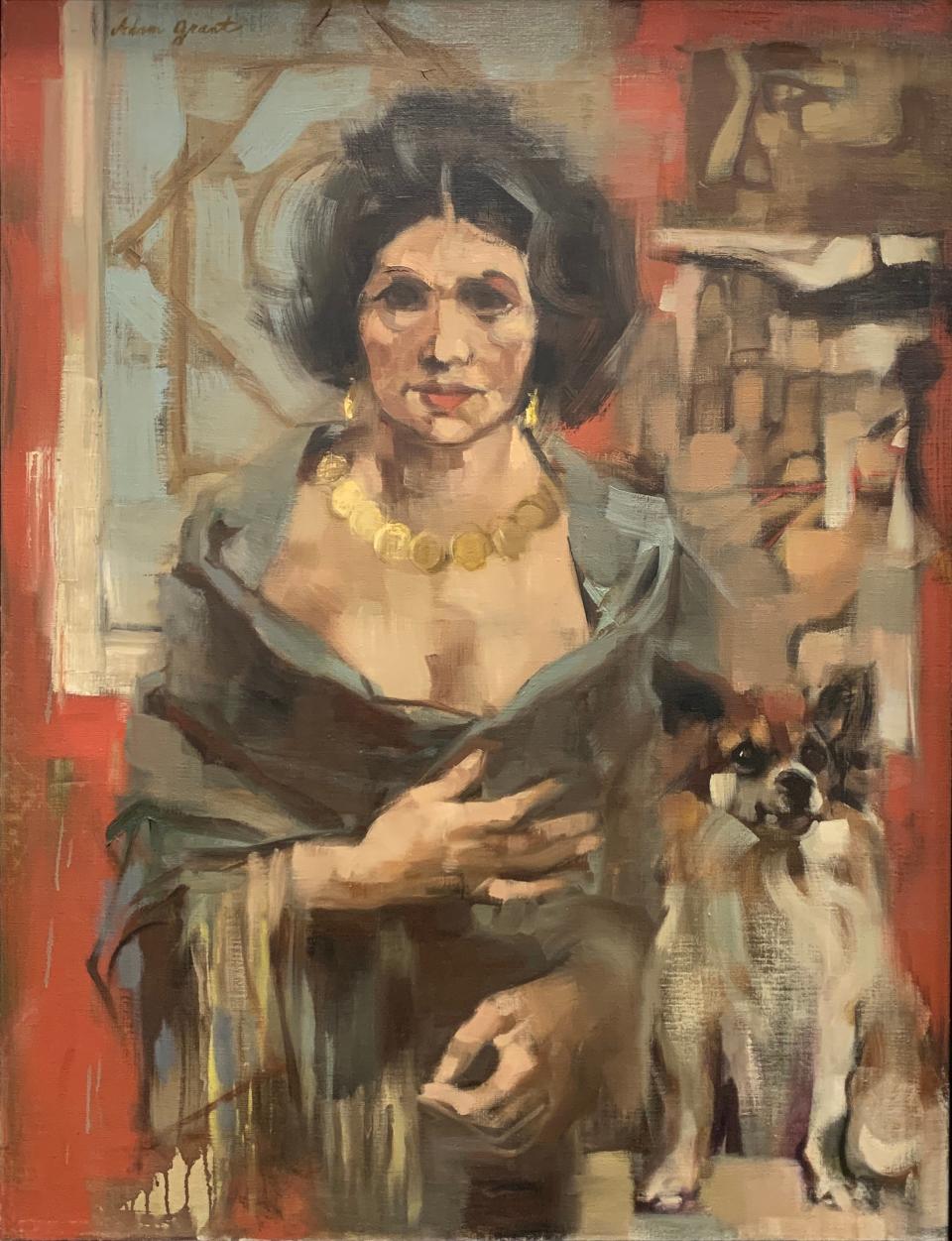
Adam Grant’s “The Fortune Teller” (1968) is an oil-on-canvas painting of his clairvoyant mother. No grandiose theme, no big message. It’s loving and sweet. That’s the shiny side of the personal coin.
But some artists wrestle with personal tragedy, with memories and trauma beyond imagining. That’s the dark side.
William Pachner’s “Transit” (1980) takes you there. This painting recalls the horrific odyssey of a hellhound train. For the artist, that horror was as personal as it gets. After WWII, this Esquire illustrator discovered that the Nazis had murdered his family in Czechoslovakia. Pachner poured out his grief on canvas. That went beyond raw emotion. “Transit” is a firestorm of pain, but there’s clearly a mind at work. The painting’s shattered lines evoke the stripes of concentration camp uniforms; the slats of cattle-car death trains; and the cold steel rails on which they rode. The painting’s bloody color palette speaks for itself. The meaning it embodies does, too. “Transit” lacks any human figures. Their absence reminds us of the millions who died.
Arts Newsletter: Sign up to receive the latest news on the Sarasota area arts scene every Monday
‘Impact’ exhibition: Sarasota Art Museum hosts group show with Hermitage Artist Retreat fellows
That’s just a selection of what this show represents. A different selection would give you a different impression.
My main impression of this show?
I was floored by the utter lack of sameness.
This exhibition’s art all flows from a central theme. Aside from that, it’s all wildly different. Artistic mediums, messages, styles and subjects – you name it. This show’s artful incarnations of human experience take many forms. Amazingly, it’s all drawn from The Ringling’s collection. What else have they got?
I can’t wait to see.
‘Embodied: Highlights from The Ringling’s Collection of Modern and Contemporary Art’
Runs through Sept. 21, 2025, in the Searing Wing at The Ringling, 5401 Bay Shore Rd., Sarasota; 359-5700; ringling.org
This article originally appeared on Sarasota Herald-Tribune: ‘Embodied’ exhibit explores human form at The Ringling
